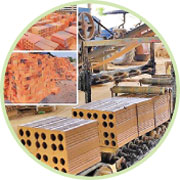 The interim government's move to shut down illegal brick kilns and not issue permits for new ones is, in all appearances, an attempt to revive the initiative of the previous government that fell flat due to inefficient execution. This, however, does not mean that the present move will also meet similar fate, and to see that this time the government succeeds in achieving its goal, it is important that the authorities are earnest in the first place.
The interim government's move to shut down illegal brick kilns and not issue permits for new ones is, in all appearances, an attempt to revive the initiative of the previous government that fell flat due to inefficient execution. This, however, does not mean that the present move will also meet similar fate, and to see that this time the government succeeds in achieving its goal, it is important that the authorities are earnest in the first place.
The adviser in charge of environment, forest and climate change, while announcing the decision this week said, presently there are as many as 3,491 illegal brick kilns in the country. Emphasising concern over environmental impact of brick kilns, she in a meeting with the Bangladesh Brick Manufacturers Association discussed the prospect of eco-friendly brick-making.
Over the past two and a half decades or so, mushrooming of brick fields almost all over the country has been a menace on many counts. Dotted across the country are thousands of slender chimneys releasing thick clouds of smoke into the horizon above the brick kilns. Inside the brick-making plants workers face extremely harsh conditions as they toil to keep pace with the country's growing demand for this housing material. Toiling under the baking sun, these workers carry out back-breaking and exhausting labour in the most perilous conditions. According to the Department of Environment, there are about 6,400 brickfields in the country. However, environmentalists claim the number to be as high as around 10,000, and half of them are located around the capital.
While working condition is one aspect, there are more to brick-making that should draw immediate attention of all concerned. One of the shocking realities that has lately emerged is that brick fields are getting increasingly invasive in grabbing the country's less than sufficient arable lands. More dangerous is the threat that comes in terms of affecting neighbourhood lands under cultivation because of the heat, caustic smoke and dust that the brick-making plants generate.
Conventional brick making is held responsible for a host of such perils. It is not just the environmentalists who are raising their voice against unabated expansion of brick fields across the country, but common people too, courtesy of the media, are becoming increasingly concerned about the ruinous effects.
Reports in the newspapers and concerns voiced by environmentalists have, in effect, done very little to halt the menacing trend of brick making across the country. However, it must not be denied that enactment of the brick making law a few years ago may have been prompted by these reports and alarm bell sounded by social and environmental activists. With the law in place, it looked like things were set to change for the better. This has not happened.
The law apparently addresses the core issues associated with brick-making--- chiefly meant to check widespread environmental pollution as well as save arable lands and forest. The law Brick Making and Brickfield Establishment (Control) Act 2013 introduced tougher regulations for brick production, including provision of trial for offences under the penal code. The stipulations envisaged in the law apply to all brick kilns in the country. The law prohibits establishment of brick kilns in residential, protected, commercial and agricultural locations, and also in forests, sanctuaries, wetlands and ecologically critical areas. It has introduced regulations for brick production, including provision of trial for offences under the penal code.
Concerned quarters are of the opinion that the law, despite strong penal provisions, has not been able to contain the havoc as yet. There are incidents of outright flouting of the law as brickfield owners are still following their conventional practice of brick-making, that too in locations prohibited by law. Besides, there is no noticeable move to remove brick fields from close proximity of cultivable lands. Reasons for violation of the law are attributed by many to lack of enforcement in general and the application of the law in specific situations where brick kilns are found visibly disruptive to ecology and croplands.
Experts, however, opine that alongside the law taking its course, there is the need to introduce modern green technology capable of taking care of the pollution aspect to a great extent. It has been learnt that the popular and widely accepted technology in this regard is smokeless, energy efficient Hybrid Hoffman Kiln (HHF). HHF brick kilns can burn most of the fuel used during firing. This also results in comparatively less energy use and a considerable cut on production costs. The most notable aspect of the technology is that it dries the bricks by directing hot air into the tunnel from the kiln, which blocks carbon emissions.
In view of the wide acceptance of the technology in advanced countries chiefly because of its emission-preventing device, Bangladesh should have opted for it long back. The cost of the technology is reportedly high. But keeping in view its efficiency, cost-effectiveness, high scale of production and above all emission-free mechanism, it is imperative that the government gradually phase out the traditional kilns and provide necessary support by way of soft-term financing to encourage the green technology.
wasiahmed.bd@gmail.com